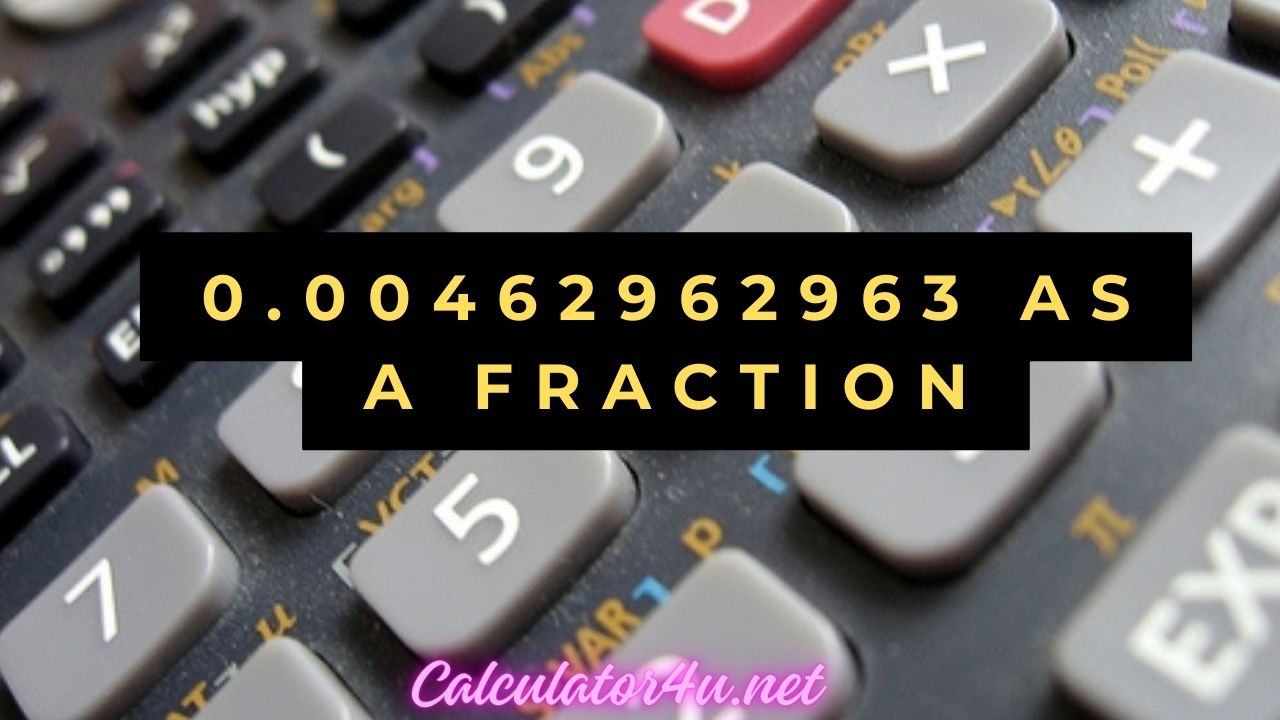Fraction Calculator
- Convert Kilogram to Nanogram
- Convert Hectogram to Kilogram
- Convert Kilogram to Hectogram
- Convert Dekagram to Kilogram
Table of Contents
0.00462962963 as a Fraction
What is 0.00462962963 as a fraction?
Welcome to a comprehensive guide on understanding the concept of converting decimals to fractions. Today, we delve into the specific decimal 0.00462962963 and its equivalent fraction representation.
What is 0.00462962963 as a Fraction?
Understanding decimal to fraction conversion is pivotal in mathematics. At its core, it involves expressing a decimal number as a fraction.
Converting to Fraction
Converting 0.00462962963 to a fraction involves a step-by-step process. Firstly, identify the place value of the last digit. In this case, it’s in the millionths place. Next, write down the decimal as the numerator and the place value as the denominator.
Simplifying the Fraction
After conversion, it’s crucial to simplify the fraction. In our case, simplifying 0.00462962963 as a fraction might result in 24324322.
Importance of Understanding
Understanding decimal to fraction conversion is not just about solving mathematical equations. It finds application in various real-life scenarios such as measurements, finance, and statistics.
Decimal to Fraction Conversion
While 0.00462962963 is a specific example, this process is applicable to any decimal. For instance, 0.25 can be expressed as 1441.
Common Misconceptions
One common misconception is that fractions are only relevant in academic settings. However, fractions play a crucial role in everyday life, from cooking recipes to understanding financial percentages.
Advantages
Knowing how to convert decimals to fractions provides numerous benefits. It enhances problem-solving skills, improves mathematical fluency, and fosters a deeper understanding of numerical relationships.
Limitations
Despite its versatility, there are scenarios where fractions might not be applicable, such as complex mathematical equations where decimals are preferred for precision.
FAQ
Q: Can fractions be negative?
A: Yes, fractions can be negative if the numerator is negative.
Q: What if the decimal has repeating digits?
A: Repeating decimals can be converted to fractions by expressing the repeating part over the appropriate number of nines.
Q: Are fractions and ratios the same?
A: While fractions and ratios share similarities, they serve different purposes. Fractions represent parts of a whole, whereas ratios compare two quantities.
Q: Can all decimals be converted to fractions?
A: Yes, all finite decimals can be expressed as fractions.
Q: Is there an easier way to convert decimals to fractions?
A: Practice and familiarity with common conversions can make the process easier over time.
Q: How do I know when to use fractions instead of decimals?
A: Use fractions when precise representation of parts or ratios is required, while decimals are useful for simplicity and ease of calculation.
Conclusion
Understanding what 0.00462962963 is as a fraction is not just about mathematics; it’s about expanding our problem-solving skills and enhancing our comprehension of numerical relationships. Embrace the versatility of fractions, and let them empower your mathematical journey.

